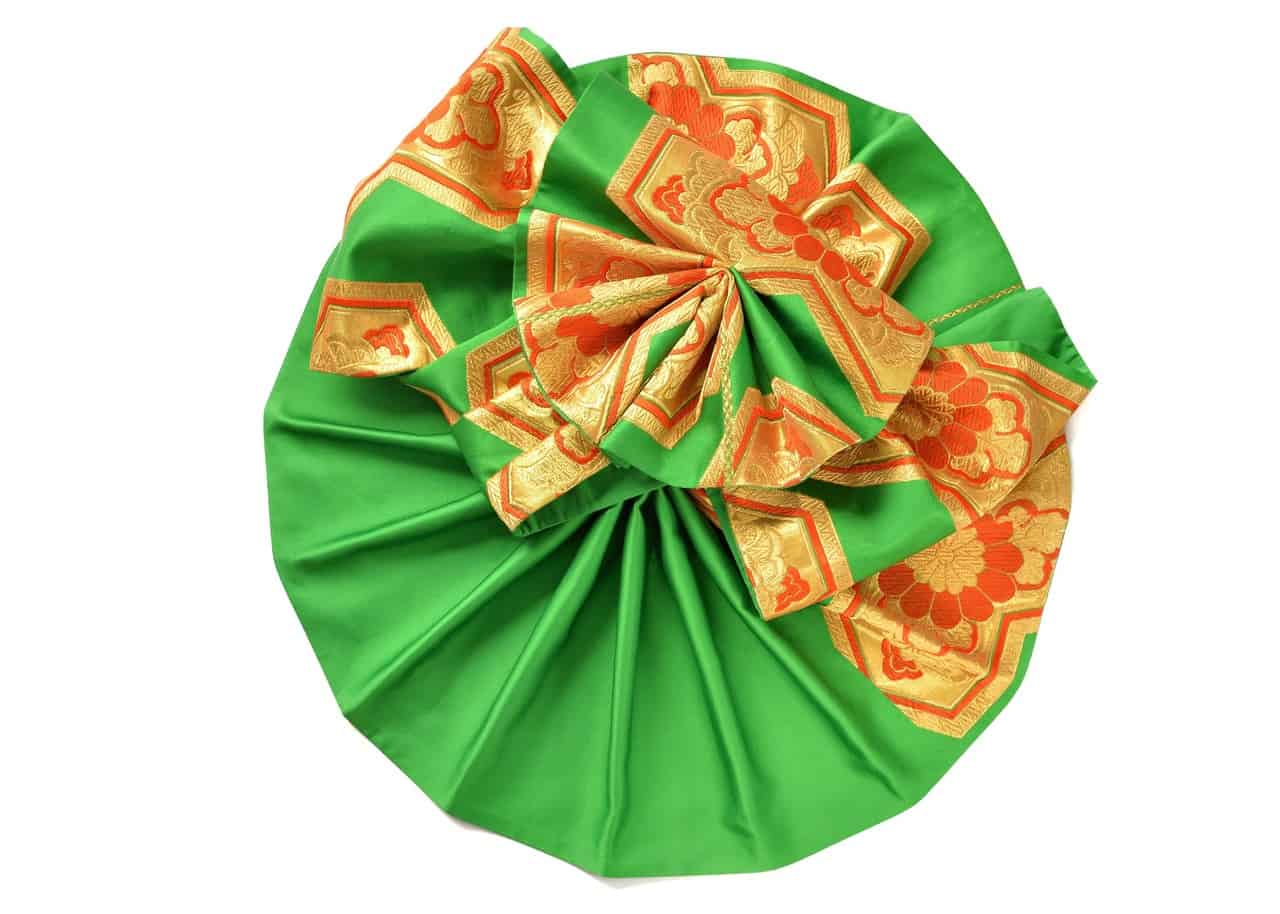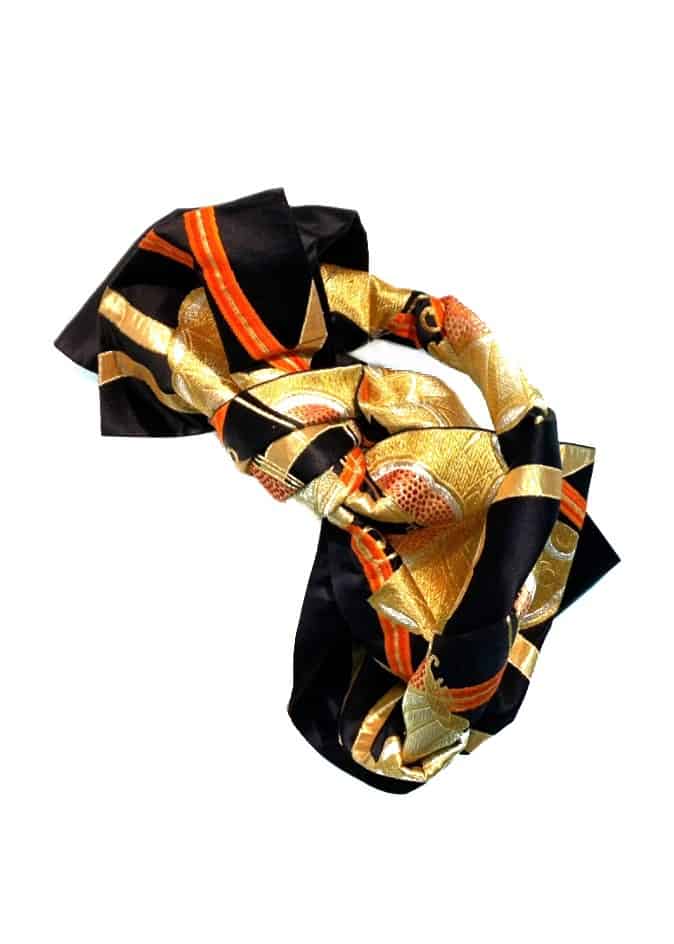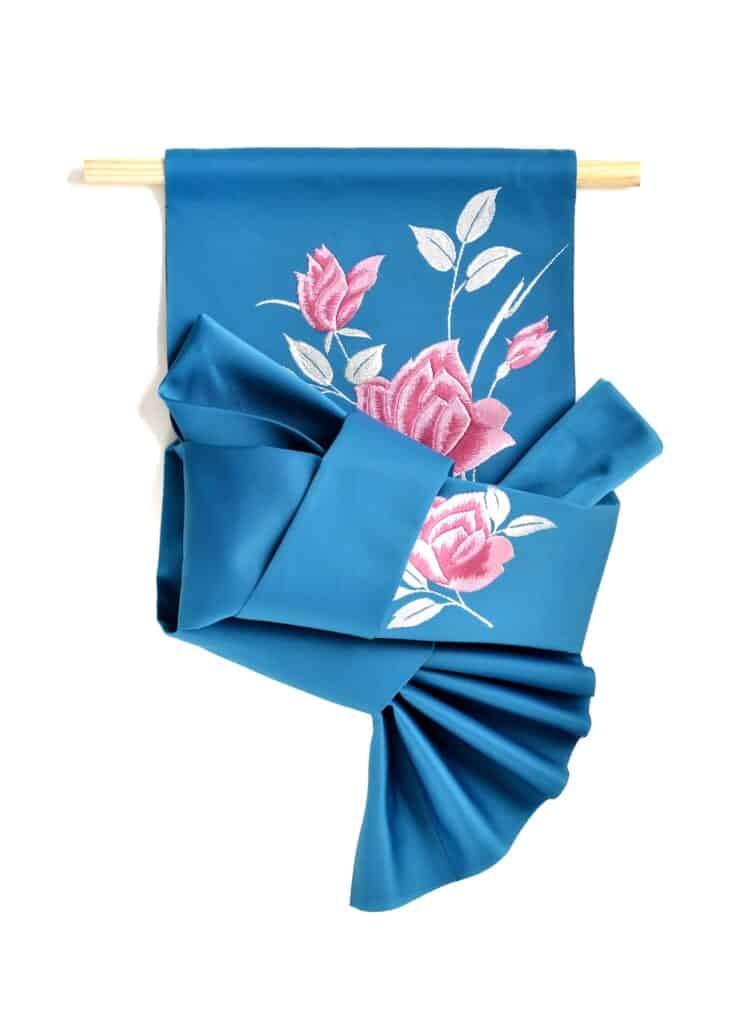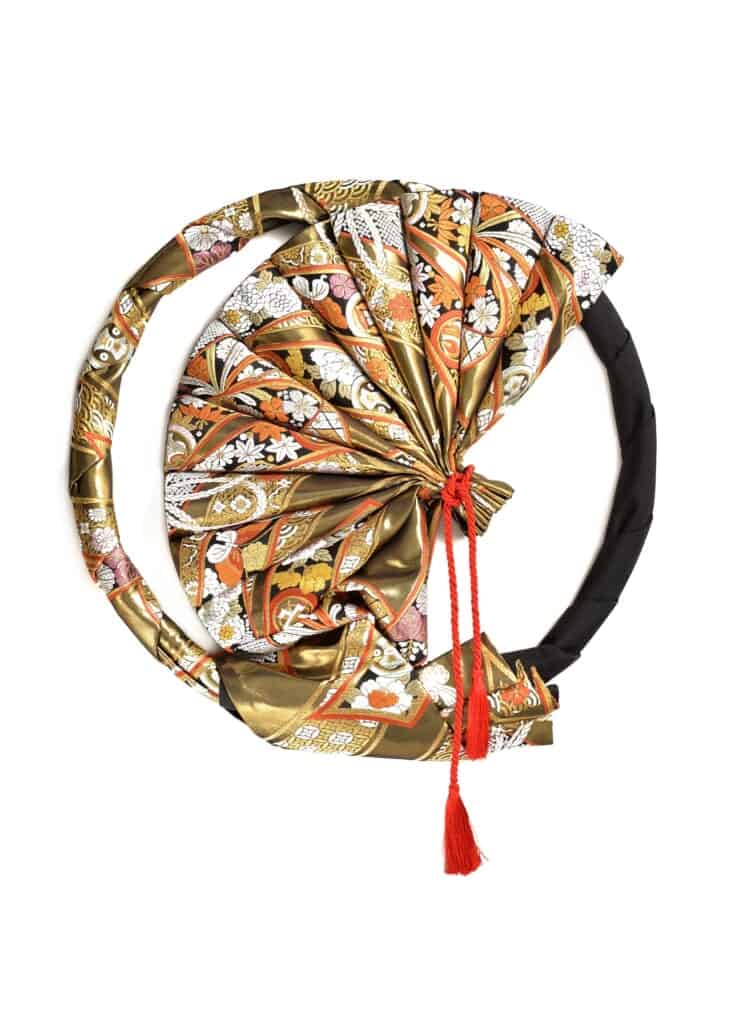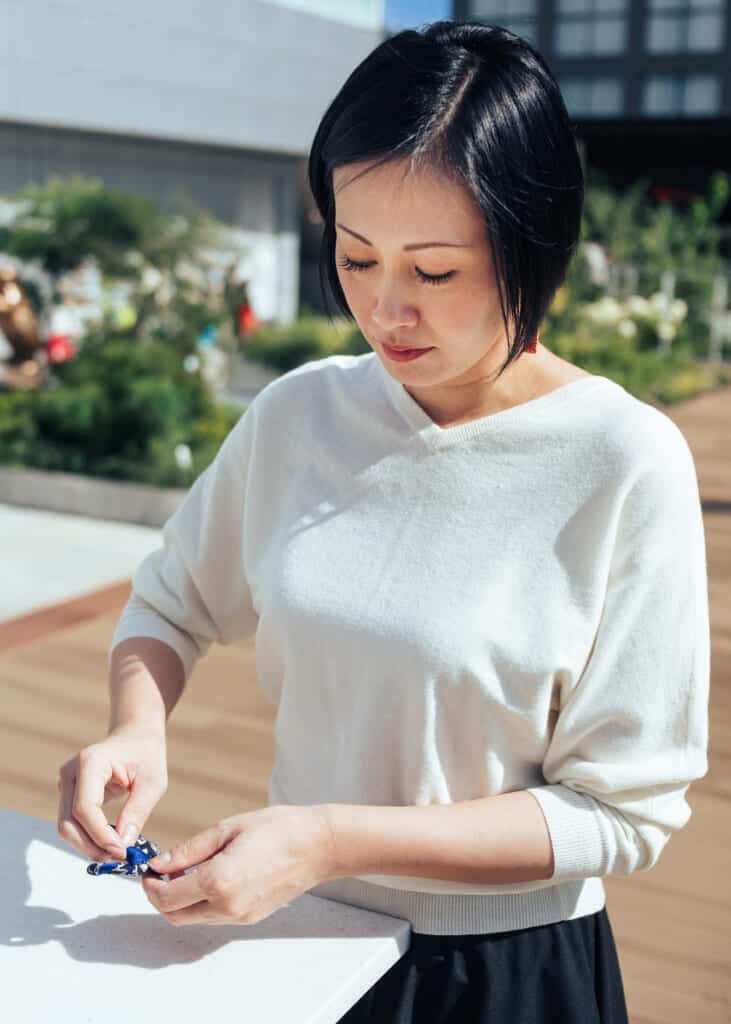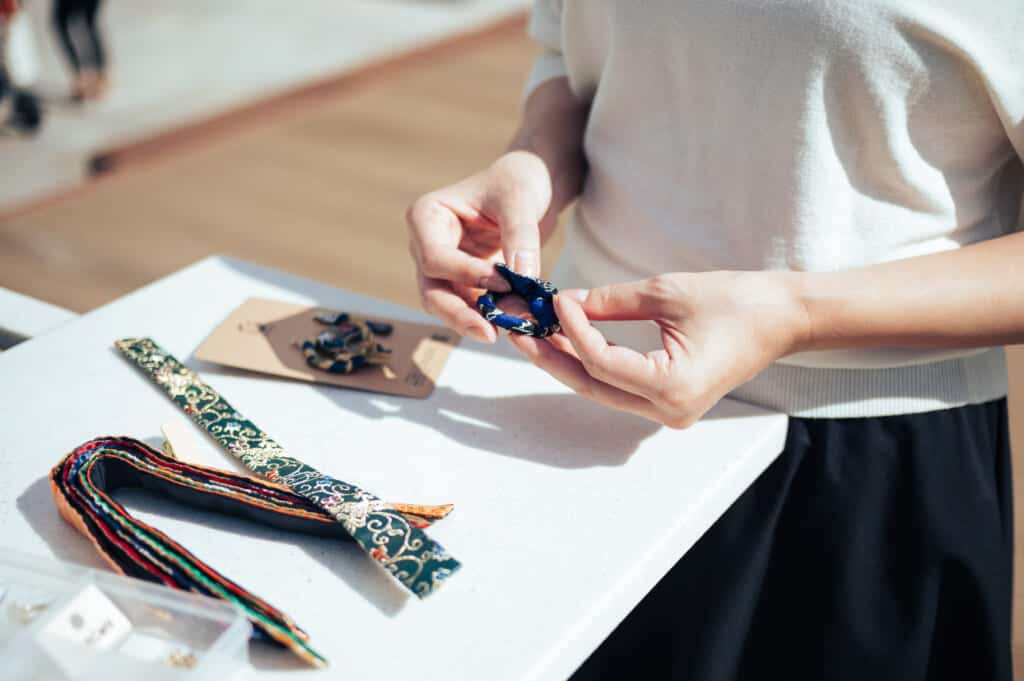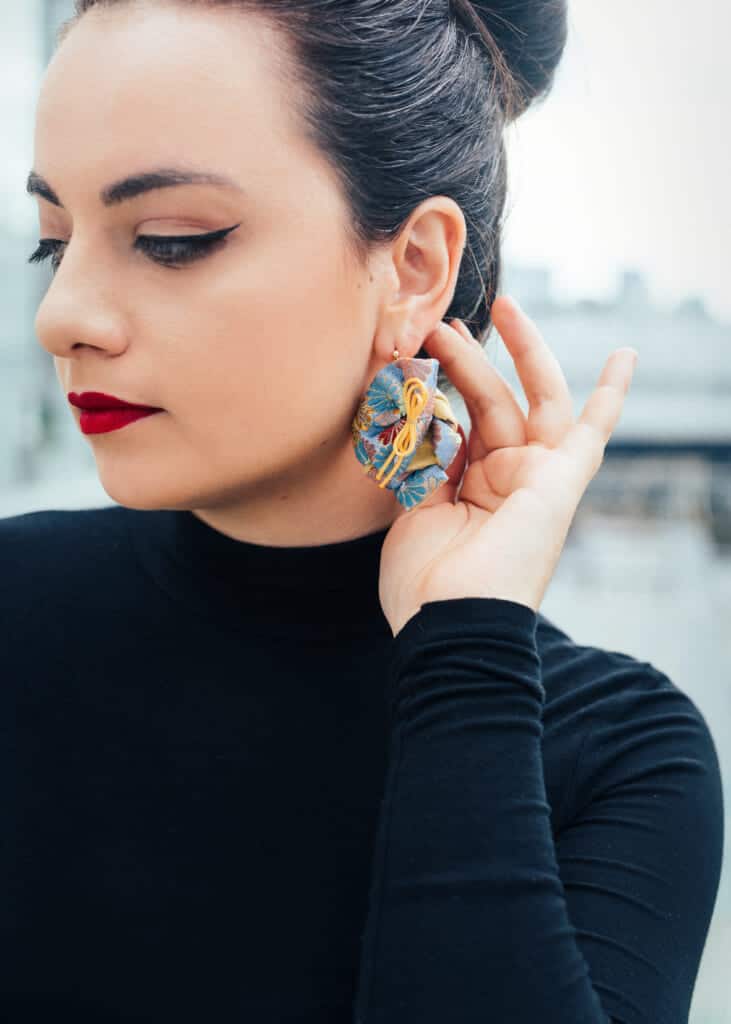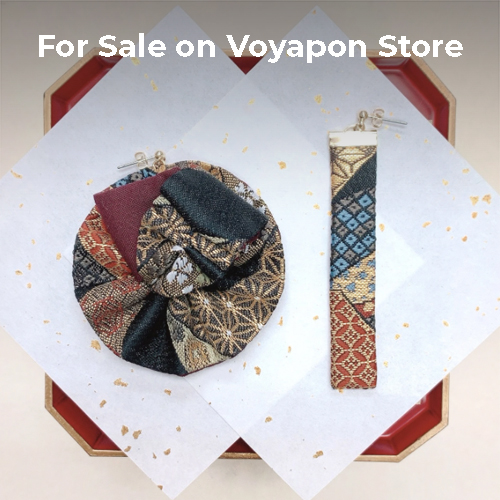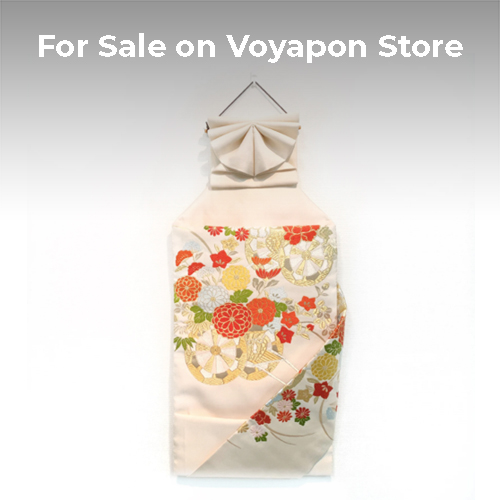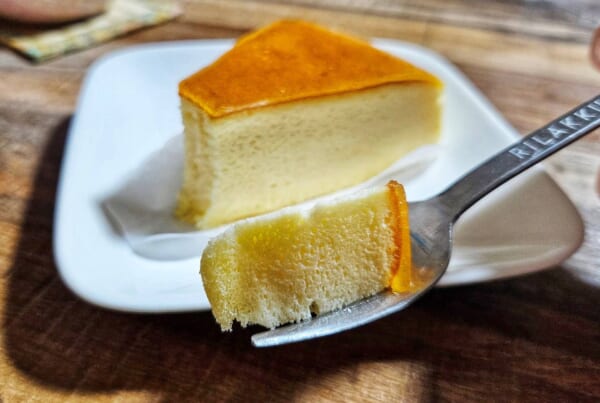The exquisite traditional Japanese kimono is a beautiful article of clothing. However, one often forgets its other half: the long belt-like obi that elegantly binds the kimono to one’s form. Kimono and obi can be paired in a seemingly infinite number of combinations of colors, patterns, and shapes. Like a pair of ballroom dancers, kimono and obi work together to make each other better.
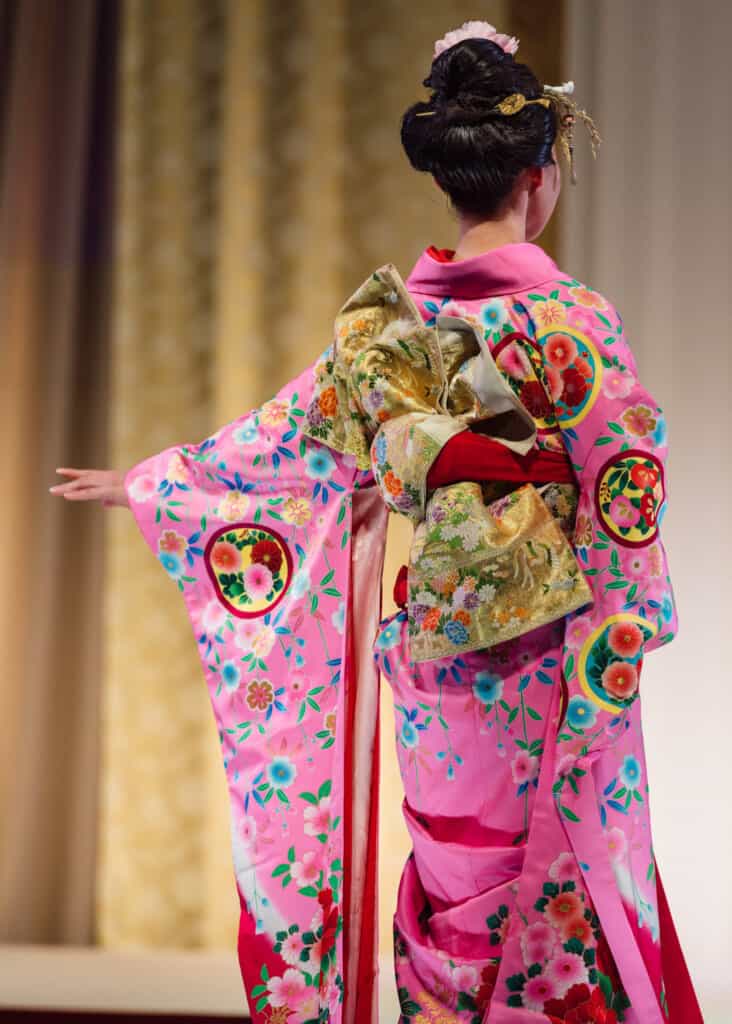
Upcycling Japan’s Hidden Treasures
The Japanese have a word, mottainai もったいない, which can be translated simply as “Such a waste.” Such a phrase describes the plight of Japan’s beautiful obi. As the interest in wearing kimono fades in modern Japan, so the lovely obi follows the same fate. They are stored in the dark drawers of old wooden tansu, waiting to be handed down to a daughter or granddaughter, but sadly for some obi, that day may never come.
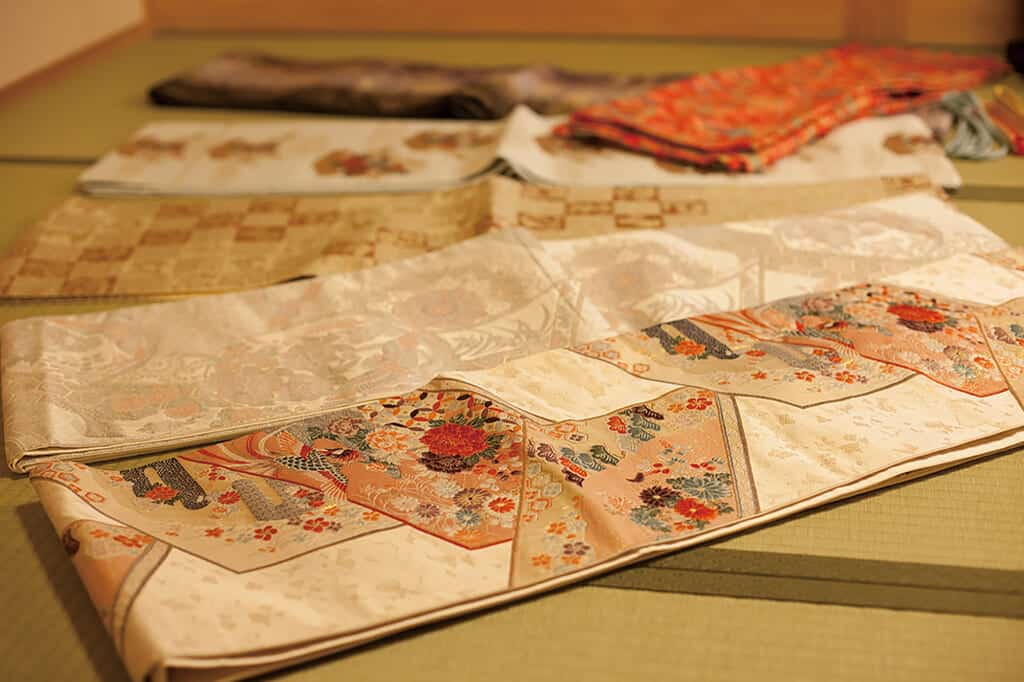
It is said that over 400 million obi are stored away in homes around Japan, many of which have gone unused for decades. A gorgeous obi embroidered with silk thread is sometimes used only once for a special occasion like a wedding and then put away as an heirloom. These wearable works of art, which took months to create, are now hidden from the world. Mottainai.
This sense of mottainai is what motivated Mami, an artist from Shizuoka Prefecture, to explore the idea of recycling old obi. Her grandmother had sent her an old obi, which was beautiful, yet well used. Mami carefully cut pieces from the obi, stitched some pearls onto them, and repurposed them as a set of lovely coasters to use. Though her home is Western-style, the obi’s elegant patterns made an attractive contrast that only enhanced the beauty of her creation.
Recycling Obi Without Destroying Them
Still, Mami felt a tinge of regret in taking scissors to something that was created by another artisan for the purpose of binding a magnificent kimono with a graceful bow. What if she could compose a work of art from the obi without destroying it? She considered the challenge carefully, eventually settling on the idea of folding and twisting the recycled obi into elegant shapes that could be displayed hanging on a wall or sitting on a table. Thus was born Oriobi, a portmanteau of the Japanese words origami (the art of paper folding) and obi.
Today, Oriobi creates art using folding techniques of both the whole obi and strips of fabric collected during the obi-making process. Large, folded pieces are made with beautiful recycled obi, meant to be displayed as art pieces. They can be used as wall hangings, table centerpieces, or even wrapped around lighting fixtures or flower arrangements. Their shapes sometimes evoke their relationships to kimono, tied in large graceful bows, the way you’d find them on the backs of young women going to a formal party or a wedding. Sometimes, she twists them into shapes that resemble nature: tree branches, beehives, and dancing butterflies. Even Oriobi’s letter holders make use of the entire obi and become beautiful, utilitarian art pieces.
Smaller pieces are created from strips of fabric collected from the obi-making process. These become the candidates for the smaller pieces: earrings and accessories, made from the still beautiful portions of obi that would otherwise be discarded. The shimmering silk threads are often as brilliant as the precious metals they resemble.
Model: Nichole
Creating New Memories from Old
Whether whole or in pieces, it is the memories in these obi that inspire Mami to do what she does. She recognizes that each obi is wrapped around its own story, perhaps a precious gift from a dear grandmother or a treasure admired longingly in the window of a Ginza department store purchased only after months of saving up money. Perhaps the obi was a unique creation of a master embroiderer who only reluctantly sold it because she really desired to keep it for herself.
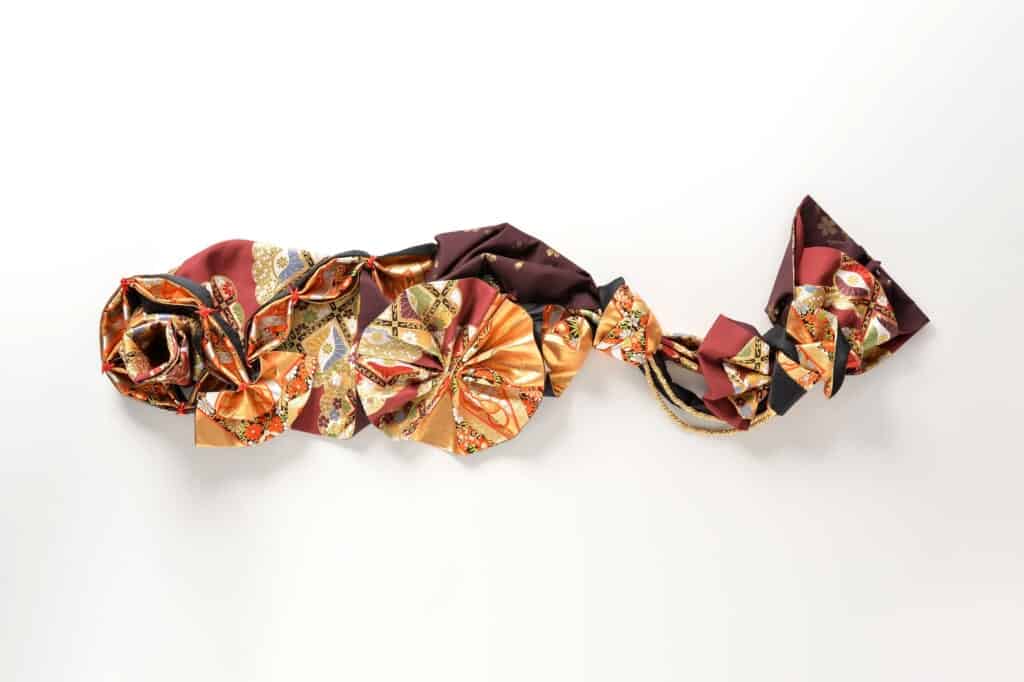
So when a person buys an Oriobi product, Mami’s wish is that they not only enjoy the beauty of the object she created, but the history of the obi it was created from. Mami believes it is not only the cloth she is upcycling, but the memories that are attached to it. Of course, in its new form, there is also the opportunity to make new memories attached to the pieces as well, adding further depth to a story that can be handed down for generations.
We are proud to partner with Oriobi to help promote their products and their mission of bringing the beauty of these hidden obi treasures back into the world again. A few items from their collection are available for purchase from the Voyapon Store.


